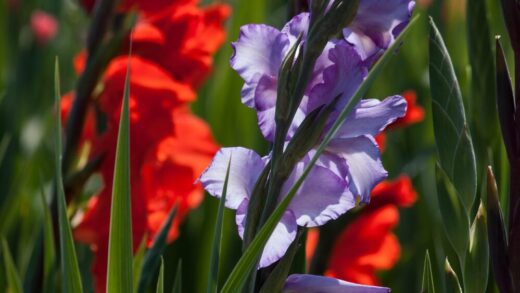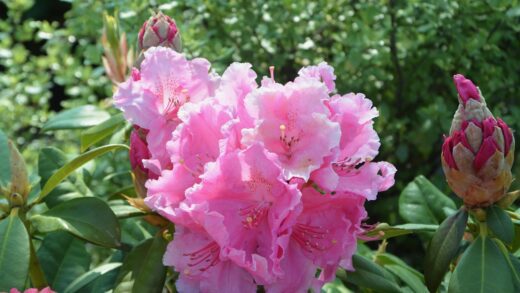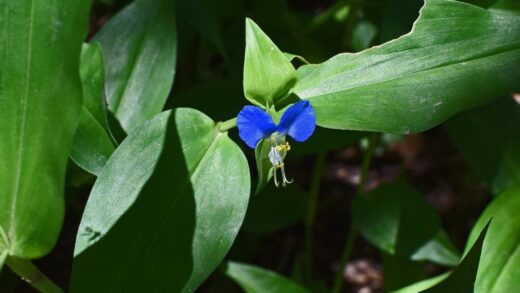One of the most appealing qualities of the bluebeard shrub for any gardener is its remarkable resilience and general freedom from significant disease and pest problems. This hardy plant seems to have a natural fortitude that keeps most common garden ailments at bay. Its aromatic foliage, which is so pleasant to humans, acts as a natural deterrent to many browsing animals and insects. However, no plant is entirely immune to problems, and being aware of the few potential issues that can arise allows for quick identification and effective, proactive management.
The cornerstone of maintaining a healthy bluebeard is prevention, which is achieved by providing the plant with its ideal growing conditions from the outset. A location in full sun with excellent soil drainage is the best defense against virtually all potential diseases, particularly the fungal issues that can arise in damp, stagnant conditions. When a plant is thriving in its preferred environment, its own immune system is strong, making it far less susceptible to attack from pathogens or pests. Therefore, proper site selection and soil preparation are your first and most powerful lines of defense.
The most serious threat to the health of a bluebeard is not an insect or a blight, but rather an environmental condition: waterlogged soil. This shrub is notoriously intolerant of “wet feet” and will rapidly decline if its roots are sitting in constantly saturated ground. This condition starves the roots of oxygen and creates the perfect environment for soil-borne fungi to attack, leading to the devastating condition known as root rot. For this reason, ensuring sharp drainage is the single most important factor in the long-term health of the plant.
While insect infestations are uncommon, it is still wise to periodically inspect your plant, especially if it appears to be under stress. Pests like aphids or spider mites can occasionally take hold, but they are typically easy to manage with simple, non-toxic methods. By practicing good garden hygiene, such as cleaning up fallen debris and providing adequate spacing for air circulation, you can create a healthy ecosystem that discourages problems before they have a chance to begin, ensuring your bluebeard remains a trouble-free star of the autumn garden.
Proactive disease and pest prevention
The most effective approach to managing diseases and pests on bluebeard is to prevent them from occurring in the first place. This proactive strategy begins with planting a healthy, vigorous shrub in a location that meets all its cultural requirements. A plant that receives at least six hours of direct sun daily will be stronger and more resilient than one struggling in the shade. Sunlight not only fuels growth but also helps to keep foliage dry, making it less hospitable for fungal spores to germinate.
More articles on this topic
Proper spacing and pruning are also critical components of preventative care. When planting bluebeard, ensure there is enough space between it and its neighbors to allow for good air circulation around the entire plant. This movement of air helps to dry leaves quickly after rain or morning dew, reducing the likelihood of fungal diseases like leaf spot. The annual hard pruning in early spring also serves a hygienic purpose, removing any old, potentially diseased wood and opening up the center of the an to improve airflow.
Maintaining good garden sanitation is another simple yet powerful preventative measure. Regularly remove any weeds from around the base of the shrub, as they can compete for resources and harbor pests. It is also beneficial to clean up fallen leaves and other debris from around the plant at the end of the season. This material can provide a place for fungal spores or insect eggs to overwinter, creating a source of infection for the following spring. A tidy garden is often a healthier garden.
Finally, watering your bluebeard correctly is a key disease prevention strategy. As has been emphasized, this plant requires excellent drainage and should not be overwatered. Applying water directly to the soil at the base of the plant, rather than using an overhead sprinkler, keeps the foliage dry and minimizes the risk of foliar diseases. By focusing on these fundamental cultural practices, you create an environment where your bluebeard can thrive and naturally resist most health challenges.
Identifying common fungal issues
While bluebeard is generally disease-resistant, the most likely problems to arise are fungal in nature, and they are almost always linked to excessive moisture and poor air circulation. One such issue you might occasionally encounter is leaf spot. This condition is caused by various fungi and manifests as small, dark spots on the leaves. While unsightly, leaf spot is typically a cosmetic issue and does not cause serious harm to the overall health of the shrub. The best course of action is to remove and destroy the most heavily affected leaves and take steps to improve air circulation.
More articles on this topic
A more serious, though less common, fungal disease is Botrytis blight, also known as gray mold. This disease thrives in cool, damp conditions and can cause buds, flowers, and stems to turn brown and develop a fuzzy gray fungal growth. It can lead to significant dieback if left unchecked. To manage Botrytis, it is crucial to prune out and destroy any infected plant parts immediately to prevent the spread of spores. Again, improving air circulation through proper spacing and pruning is the best long-term preventative measure.
Powdery mildew is another common fungal disease in many gardens, appearing as a white, powdery coating on the leaves. While it can affect a wide range of plants, bluebeard is not particularly susceptible unless it is grown in conditions that are too shady or crowded. If it does appear, it is usually late in the season and causes little real damage. Ensuring the plant is in full sun and has good airflow is typically enough to prevent powdery mildew from becoming a problem.
In all cases of fungal disease, chemical fungicides should be considered a last resort. For a plant like bluebeard, improving cultural conditions is a far more effective and sustainable solution. If you consistently struggle with fungal issues on your shrub, it is a strong indication that the plant is in the wrong location. Moving it to a sunnier, better-drained spot with more air movement will likely solve the problem permanently.
Managing root rot and soil-borne pathogens
Root rot is the single most destructive health problem that can afflict a bluebeard shrub, and it is entirely preventable. This disease is not caused by a single pathogen but rather by a complex of soil-borne fungi, such as Phytophthora, that thrive in anaerobic (oxygen-deprived) conditions. When soil becomes waterlogged, the air spaces fill with water, depriving the roots of the oxygen they need to function and survive. This stressed state makes them highly vulnerable to attack by these opportunistic fungi.
The symptoms of root rot begin below the ground but soon become visible above it. The plant may appear wilted, even when the soil is wet. Leaves will often turn yellow or brown and drop prematurely, and the overall growth of the shrub will be stunted. As the disease progresses, entire branches will die back, and eventually, the entire plant will perish. By the time these symptoms are severe, the root system has likely sustained irreversible damage, making recovery highly unlikely.
Prevention is the only effective management strategy for root rot. This starts with assessing your soil drainage before you even plant. To test drainage, dig a hole about 30 centimeters deep and fill it with water. If the water has not drained away within a few hours, the drainage is poor, and you will need to take corrective measures. This can involve heavily amending a large area with organic matter like compost and coarse sand, or, more effectively, planting the bluebeard in a raised bed or on a natural slope.
If you suspect an existing plant is suffering from the early stages of root rot, you can try to improve the conditions immediately. Stop all supplemental watering and allow the soil to dry out as much as possible. You can carefully cultivate the soil surface to improve aeration. In some cases, if the plant is not too large, carefully digging it up, pruning away any dark, mushy roots, and replanting it in a better-draining location or a container can save it. However, the prognosis is often poor, which highlights the importance of getting the planting conditions right from the start.
Common insect pests affecting bluebeard
Fortunately, bluebeard is not a primary target for most common garden insect pests. Its aromatic leaves seem to be unpalatable to many insects, as well as to larger browsing animals like deer and rabbits, which is a significant advantage for gardeners. However, under certain conditions, particularly if a plant is stressed by poor growing conditions, it can become more susceptible to infestation by generalist pests that are present in the wider garden environment.
Occasionally, you may find aphids on the new, tender growth of bluebeard in the spring. These small, soft-bodied insects feed by sucking sap from the plant, and in large numbers, they can cause some distortion of the leaves and stems. In most cases, natural predators like ladybugs and lacewings will quickly bring the aphid population under control. If intervention is needed, a strong spray of water from a hose is often sufficient to dislodge them. For a more persistent problem, an application of insecticidal soap can be very effective.
Spider mites are another potential pest, especially during hot, dry weather. These tiny arachnids are difficult to see with the naked eye, but their presence is indicated by a fine webbing on the leaves and a stippled, faded appearance of the foliage. Like aphids, they feed by piercing plant cells and sucking out the contents. Increasing humidity around the plant by hosing it down can discourage spider mites, and horticultural oils or insecticidal soaps are effective control measures if the infestation becomes severe.
It is important to approach any pest issue with an integrated pest management (IPM) mindset. This means starting with the least toxic control methods first and using chemical pesticides only as a last resort. For a resilient plant like bluebeard, resorting to harsh chemicals is almost never necessary or advisable. By fostering a healthy garden ecosystem that encourages beneficial insects and predators, you can ensure that any minor pest outbreaks are managed naturally, without the need for chemical intervention.


















